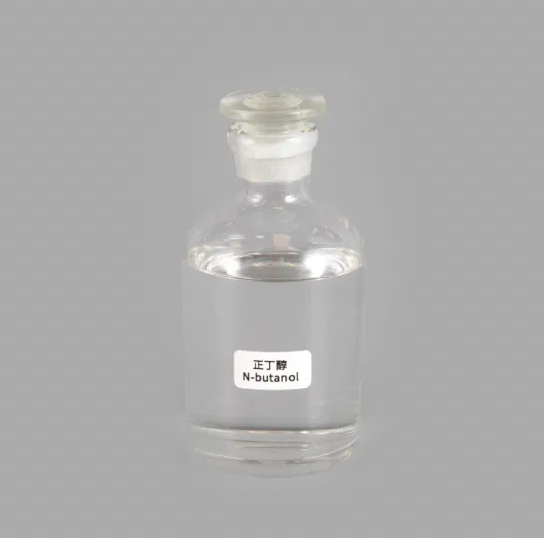CAS: 71-36-3
EINECS NO.:200-751-6
HS NO:2905130000
UN NO.:1120/3
PURITY:99.9%
DENCITY:0.8098
Flashing Point(℃):35
WEIGHT/DRUM :170KG
QUANTITY/FCL):13.60MT
QUALITY STANDARD:13%
Description Of Goods:
n-Butanol or n-butyl alcohol or normal butanol is a primary alcohol with a 4-carbon structure and the chemical formula C4H9OH. Its isomers include isobutanol, 2-butanol, and tert-butanol. Butanol is one of the group of "fusel alcohols" (from the German for "bad liquor"), which have more than two carbon atoms and have significant solubility in water. n-Butanol occurs naturally as a minor product of the fermentation of sugars and other carbohydrates, and is present in many foods and beverages. It is also a permitted artificial flavorant in the United States, used in butter, cream, fruit, rum, whiskey, ice cream and ices, candy, baked goods and cordials. It is also used in a wide range of consumer products.
The largest use of n-butanol is as an industrial intermediate, particularly for the manufacture of butyl acetate (itself an artificial flavorant and industrial solvent). It is a petrochemical, manufactured from propylene and usually used close to the point of manufacture. Estimated production figures for 1997 are: United States 784,000tonnes; Western Europe 575,000tonnes; Japan 225,000tonnes.
Main Characteristic:
1. A colorless, transparent liquid that smells of wine.
2. N-butanol content % ≥ 99.50, 99, 98 GB/T6027
3. There are three methods: fermentation, propylene carbonyl synthesis and acetaldehyde alcohol - aldehydes.

Specification of Butyl Alcohol:
Name | Analytically Pure | Chemically Pure |
Content:CH3(CH2)2CH2OH,% | ≥99.0 | ≥98.0 |
chroma | ≤10 | ≤15 |
density(20°C),g/ml | 0.808-0.811 | 0.808-0.811 |
evaporation deposits,% | 0.001 | 0.005 |
moisture(H2O) ,% | 0.2 | |
acidity(as H+), mmol/100g | 0.05 | 0.15 |
carbonyl compound(as CO ),% | 0.02 | 0.04 |
ester(as CH3COOC4H9),% | 0.1 | 0.3 |
unsaturated compound(as Br ),% | 0.005 | 0.05 |
iron(Fe ),% | 0.00005 | 0.0001 |
Applications of Butyl Alcohol:
1. For the production of n-butyl ester plasticizers (phthalic acid, aliphatic dibasic acid and phosphoric acid), as well as plastic and rubber products.
2. It is also the raw material of butyraldehyde, butyric acid, butylamine and butyl lactate in organic synthesis.
3. Extract of oils, medicines and spices, additives in alkyd resin coatings, etc.
4. It can also be used as solvent and dewaxing agent for organic dyes and printing inks.
5. Also used in the production of melamine resin, acrylic acid, epoxy varnish, etc.;
6. Used as chromatographic analysis reagent, also used for organic synthesis, etc.;
7. Used for preparing banana, cream, whisky and cheese flavor.
Quality Certificate
ISO9001:2008 -Quality Management System; SGS certification; FDA certification
联系人:Michelle Zhang
手机:+86 19050308356
电话:+86 371 89812008
地址: 河南省郑州市高新区科学大道西悦城